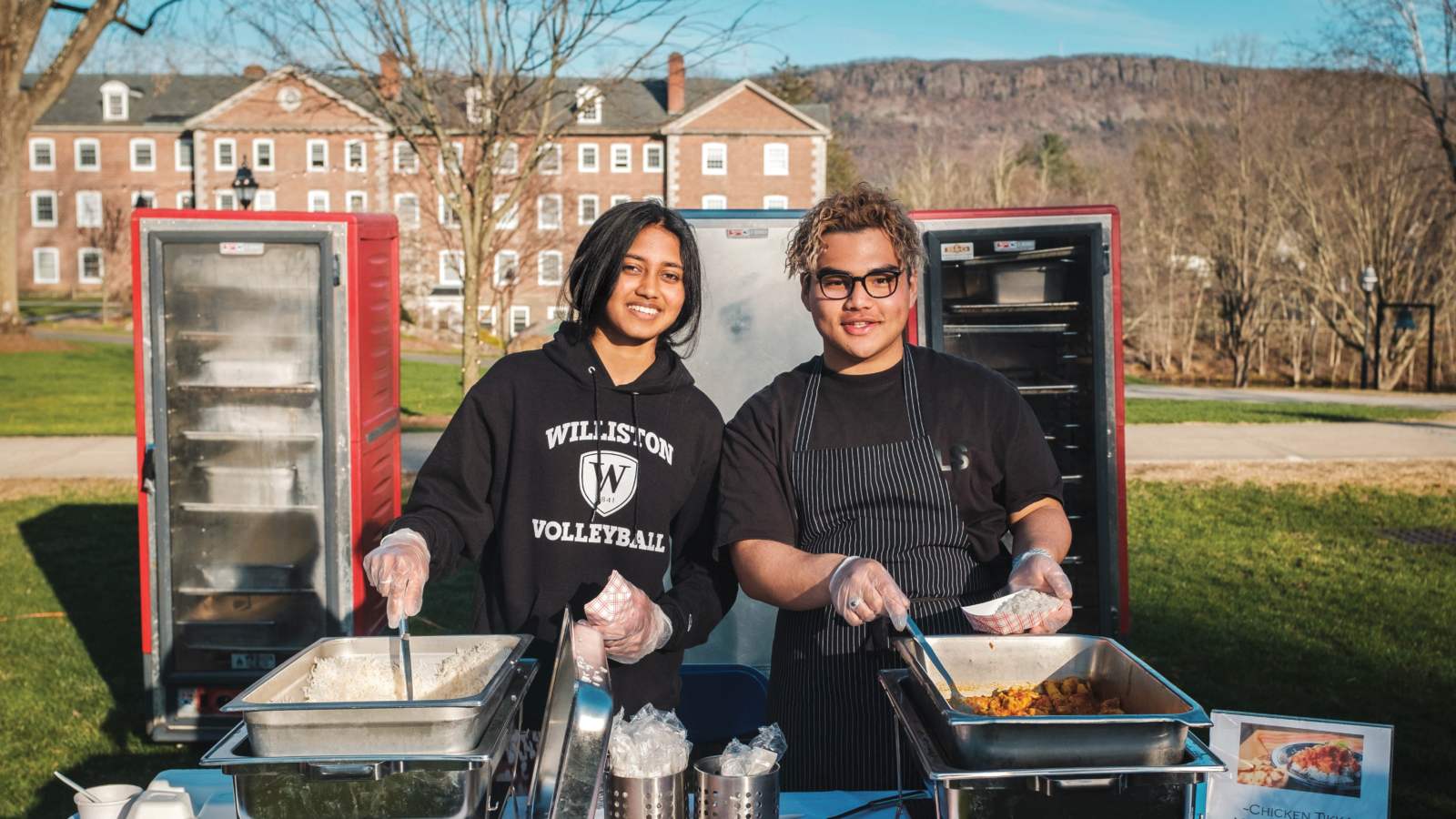A new tradition brings Asian culture and cuisine to the Quad
On a perfect Monday evening in April, Williston’s Main Quad was transformed. More than a dozen food stations were set up, grill smoke wafted through the air, and Asian hip-hop music transported hungry students and faculty to the open-air markets of East and Southeast Asia. It was the school’s first-ever Asian Night Market, an event months in the making that served as a kickoff to the following day’s Why Not Speak Day events.
The idea began to take shape last fall, when Williston faculty member and Asian Alliance Club advisor Ken Choo periodically took groups of Asian students to nearby Asian grocery stores, collecting specialty goods that reminded students of their favorite dishes from home. They would return to Choo’s home to cook and share stories, and it was on one of these occasions that the idea for the Asian Night Market was born—a school-wide cookout on the Main Quad featuring foods from China, Japan, South Korea, the Philippines, and Vietnam. Everyone was excited about the idea, Choo says, “but the bridge between novel idea and fruition came about because Owen Fu ’22 took the reins and lent his effort, leadership, passion, and commitment.”
Owen and other Asian Alliance Club members gained the necessary support from faculty, Physical Plant, and SAGE dining services, whose “encouragement and accompanying astute questions were crucial,” Choo says. Using ingredients sourced from the same stores Choo and his students had visited, the crew of passionate student cooks worked in conjunction with SAGE staff to prepare authentic dishes from their home countries, including chicken tikka masala; skewers of beef, lamb, and vegetables; tempura; bulgogi; bánh mì; and grass jelly topped with boba. The Asian Night Market was a huge—and delicious—success, and the club is already planning for next year. “In the end, it was a wonderful chance for Asian students to spend time together and to share their cultures with the rest of the community,” says Choo.

